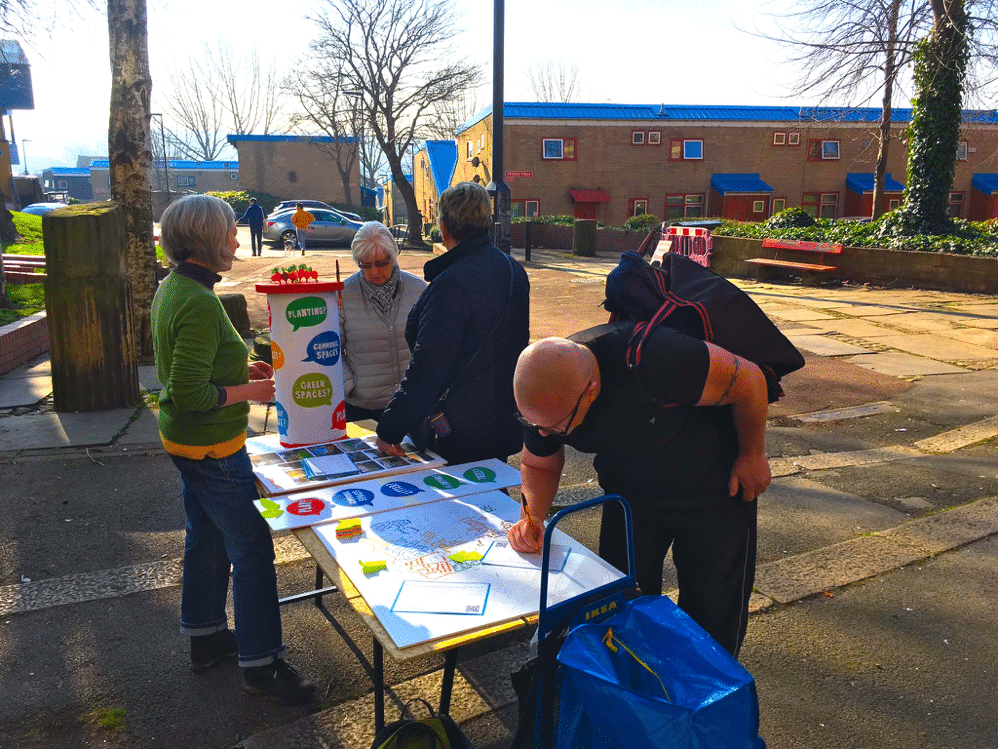Typically, public consultation events in village halls used to be the default form of engagement in construction and planning. In recent years, this method of consultation has been accompanied by approaches that account for our connected lifestyles, using online consultation tools such as the PlaceChangers engagement platform. Especially during the Covid pandemic, when public events were impossible to arrange, online consultation methods took centre stage.
Each method of consultation, online and face-to-face public consultation events, has distinct advantages. Most successful projects that generate buy-in from stakeholders and profound insights that influence the planning process will come from a mixed approach. Face-to-face events in public engagement offer many advantages over online consultations for trust-building, demonstrating human face, and deeper discussions on objectives other 'softer' aspects that shape design development.
So here are a few tips on how you can combine online engagement with face-to-face interactions effectively.
Online versus in-person community engagement activities
Face-to-face personal interactions between people or groups have a great social benefit. Face-to-face interactions support different kinds of rapport building over online consultations:
In a study by Waterloo University in Canada, researchers asked 45 people to invite 10 participants each to complete a survey. Half of the group made their requests face-to-face, while the other half sent emails. The results were clear: Face-to-face requests were 34 times more likely to be answered. Why? Because face-to-face meetings promote trust and relevance far quicker than any cold email or paper flyer could. In conclusion, in-person meetings can diffuse conflict more quickly, establish trust and better communicate emotions.
Robust community engagement typically requires different interaction points, both online and face-to-face public consultation events. Success means combining online media with the ability for individuals to come to meeting spaces and socialise, either with the project team or with other participants. Anecdotal evidence also suggests that younger people prefer digital interaction, whereas older people might prefer a meeting or a handwritten response.
Online and in-person community engagement tips
Rather than seeing it as a choice between two approaches, it is better to appreciate their relative strengths. In most community engagement projects, your possibilities of engaging many people through detailed face-to-face interactions are naturally limited due to time constraints and obvious logistical issues. It can also be challenging to simultaneously follow up and correspond to a large audience with face-to-face engagement.
That’s why a dual approach is most powerful when it comes to meaningful community engagement:
Lead in with a digital presence of your project
Balance this with a firm grounding in the real world. Consider how to establish a presence where your development may have an impact. Help participants respond efficiently without having to go online.
Naturally, in-person events are more resource-heavy than running an online consultation. You will need to think about resources for venues, staff, and productive activities for your in-person events.
Face-to-face and in-person engagement on a small budget
Face-to-face and in-person engagement on a larger budget



Take aways
In conclusion, the combination of in-person and online engagement activities is most impactful and meaningful. It is recommended for larger projects or projects or projects with a distinct community focus or impact.
If you align your communication across different channels, the public will be more easily able to recognise your project online and offline. This generates more trust amongst participants and increases the possibility of an excellent demographic spread – ultimately leading to more robust engagement data.
When working across different engagement platforms, pay special attention to aligning your tone of voice and visual communication across all channels. This includes choosing and sticking with the same visible colour schema, typography, logos, etc. You should also make sure that the critical points of your project do not change, such as the justification for the project, its title and the outcomes that you aim to achieve.
The PlaceChangers Engagement tool makes it easy to generate all required online materials to support your project. Depending on the work programme, PlaceChangers can advance and introduce you to relevant specialists for in-depth community engagement.
Explore the PlaceChangers planning toolkit

PC Engagement - market leading planning engagement
Set up powerful map surveys and polls based on the changes that may come up on your estate and prioritise future planning interventions more easily.
